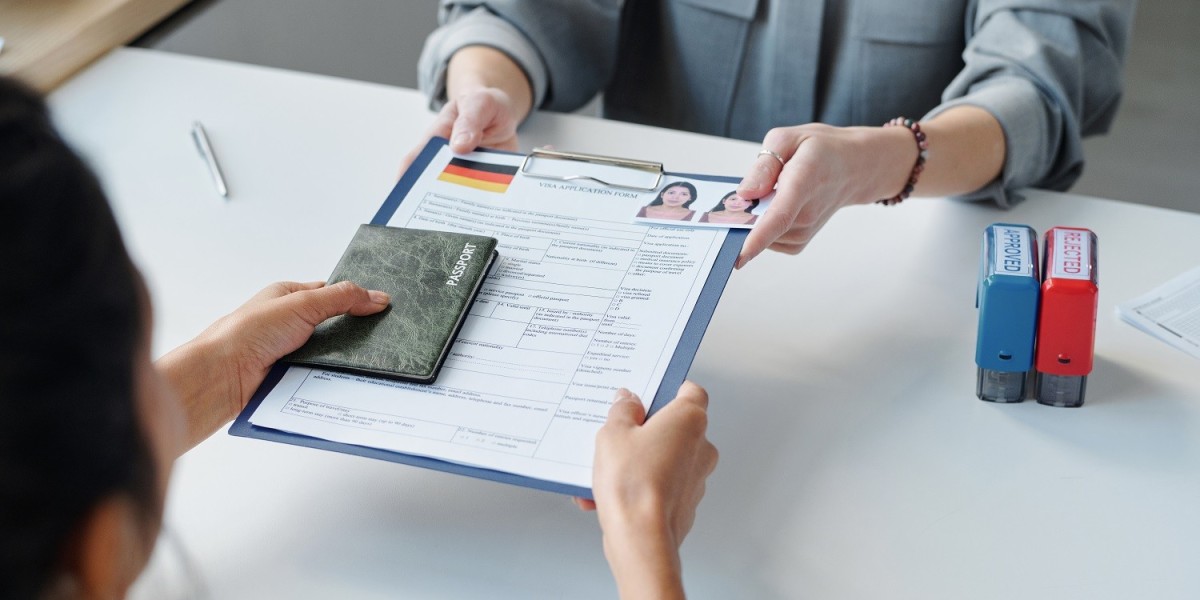The UK immigration system offers different types of residency options for non-UK nationals. Among the most crucial are Limited Leave to Remain (LLR) and Indefinite Leave to Remain (ILR). These two categories of immigration status are central to determining how long someone can stay in the UK, the rights they have while residing here, and their eligibility to settle permanently. In this guide, we will break down both LLR and ILR, explaining their key differences, eligibility requirements, and how to apply for leave to remain in the UK. This information is vital if you’re planning a long-term stay, aiming for permanent settlement, or looking to secure your residency rights.
TMC Solicitors understand that navigating immigration law can be confusing. That’s why our legal experts are here to assist you throughout the process, from your initial application to extending your stay and eventually transitioning to permanent residency.
What is Leave to Remain?
Before diving into the details of Limited Leave to Remain and Indefinite Leave to Remain, it’s important to understand the overall concept of "leave to remain." Simply put, leave to remain refers to permission granted by the UK government to stay in the country. It can be temporary (LLR) or permanent (ILR), depending on your circumstances and visa category.
Now, let’s explore the two main types of leave to remain in detail.
Limited Leave to Remain (LLR)
Limited Leave to Remain (LLR) is a temporary form of residency granted to individuals who meet specific criteria, such as having family ties, a job, or humanitarian reasons for staying in the UK. It’s issued for a set period, typically ranging from 2.5 to 5 years, depending on your visa category. LLR allows you to live in the UK, but it comes with certain conditions and restrictions.
Key Features of Limited Leave to Remain
1. Temporary Stay
LLR is time-limited and not a permanent solution. Once the period granted expires, you’ll need to apply for leave to remain again if you wish to continue staying in the UK. Most people on LLR will need to extend their visa multiple times before becoming eligible for permanent residency.
2. Restrictions
Individuals with LLR may face limitations such as restrictions on claiming public funds (certain benefits) or work and study limitations depending on the visa type. It is important to be fully aware of these conditions to avoid violating your visa terms.
3. Eligibility
Various types of people can be granted LLR:
o Family members of UK citizens or settled persons.
o Skilled workers who come to the UK under sponsorship.
o Students who are pursuing education in the UK.
o Asylum seekers who need protection.
4. Pathway to ILR
A major advantage of LLR is that it can eventually lead to Indefinite Leave to Remain. Most people with LLR become eligible to apply for ILR after several years (usually five, but it can vary), provided they meet the residency requirements and have adhered to the terms of their visa.
5. Renewal
Since LLR is time-limited, it is crucial to renew or extend your status before it expires. Failure to do so may result in overstaying, which can have serious legal consequences. TMC Solicitors can help ensure that your extension application is complete and submitted on time, minimizing the risk of refusal or delay.
Indefinite Leave to Remain (ILR)
Indefinite Leave to Remain (ILR), on the other hand, grants permanent residency in the UK. With ILR, individuals are allowed to live, work, and study in the UK without the restrictions that come with temporary visas. ILR is the ultimate goal for many immigrants as it offers stability and allows them to eventually apply for British citizenship.
Key Features of Indefinite Leave to Remain
1. Permanent Residency
ILR is a form of permanent settlement. Once granted, it allows you to stay in the UK indefinitely without the need for further visa renewals. You are free to live and work in the UK without the conditions attached to temporary visas.
2. Work and Public Funds
Unlike LLR, those with ILR have full access to work in any field and can claim public funds (benefits) without restrictions. This offers significant advantages for families, workers, and others looking to build a long-term life in the UK.
3. Eligibility Requirements
To qualify for ILR, applicants must usually have lived in the UK for a continuous period (usually five years), though this may vary depending on the visa route. The following are common categories that can lead to ILR:
o Family visas (partners or dependents of British citizens).
o Work visas (such as the Skilled Worker Visa).
o Long-term residence based on time spent in the UK (e.g., 10 years).
o Humanitarian protection or asylum grounds.
4. Application Process
When you apply for ILR, it’s crucial to demonstrate continuous lawful residence in the UK. This means you must have adhered to the terms of your visa during your stay, including not breaching immigration conditions. You’ll also need to pass the Life in the UK test and meet English language requirements. TMC Solicitors can guide you through each step, helping you gather evidence and complete your application.
5. Pathway to Citizenship
Once you have held ILR for at least 12 months, you may be eligible to apply for British citizenship, giving you the full rights and privileges of a UK citizen, including the right to vote and hold a UK passport.
Key Differences Between LLR and ILR
While both LLR and ILR allow individuals to stay in the UK, the main difference lies in the temporary vs. permanent nature of the residency. LLR is time-limited and often seen as a stepping stone to ILR, whereas ILR provides permanent residency with fewer restrictions. Another key distinction is the ability to claim public funds and the requirement to renew your visa regularly under LLR, which is not needed once you have ILR.
If you’re unsure about which type of leave to apply for or how to transition from LLR to ILR, TMC Solicitors is here to help. Our team of experienced immigration lawyers will work closely with you to ensure that your application is successful and that you are on the right path to settlement.
How to Apply for Leave to Remain
Applying for Leave to Remain is a critical process in securing your right to live and stay in the UK, whether you’re aiming for Limited Leave to Remain (LLR) or Indefinite Leave to Remain (ILR). The application process can be complex and requires careful preparation. Below are the steps you should consider when you apply for leave to remain:
Steps to Apply for Leave to Remain
1. Determine Eligibility
Before applying, ensure you meet the eligibility criteria for the type of leave to remain you're seeking. For LLR, you may need to demonstrate family ties, work qualifications, or protection needs. For ILR, you must show continuous lawful residence, meet the time requirements (usually five years), and pass the Life in the UK test.
2. Prepare Documents
Gather all necessary documentation, including proof of identity (passport), proof of residency, evidence of lawful status (visa history), financial documents, and any other required materials such as relationship certificates for family visas. Having the right paperwork is essential to avoid delays or refusals. TMC Solicitors can assist in reviewing your documentation and ensuring everything is in order.
3. Submit Your Application
Applications for both LLR and ILR are submitted online via the Home Office website. You’ll need to fill out the appropriate form depending on the type of visa you hold. Once you’ve filled out the form, pay the application fee and the Immigration Health Surcharge (IHS) if applicable. TMC Solicitors can walk you through the form to ensure that no mistakes are made.
4. Biometric Appointment
After submitting your application, you’ll be asked to book a biometric appointment. During this appointment, your fingerprints and a photograph will be taken, and you’ll need to provide proof of identity and your supporting documents.
5. Await Decision
Processing times for leave to remain applications can vary. For LLR, the decision can take a few weeks, while ILR applications may take longer. You’ll receive a decision letter, and if successful, a Biometric Residence Permit (BRP) confirming your new immigration status.
6. Extension and Appeal Options
If you are refused LLR or ILR, you may have the option to appeal or reapply. Having a strong legal team like TMC Solicitors is crucial in these cases. We can help you navigate the appeal process or advise you on next steps if your application was refused.
Common Mistakes When Applying for Leave to Remain
Applying for leave to remain can be a detailed process, and small mistakes can lead to delays or refusals. Here are some common errors to avoid:
· Missing Documents: Ensure you submit all required paperwork, as missing even one document can result in refusal.
· Incorrect Information: Always double-check your application to avoid mistakes in personal details, visa history, or residency dates.
· Late Applications: Always apply before your current visa expires to avoid overstaying, which can negatively impact your future immigration status.
· Failure to Meet Residency Requirements: For ILR, it’s vital to maintain continuous residency in the UK. Be cautious about spending too much time outside the country, as this can affect your eligibility.
Transitioning from LLR to ILR
For many individuals, Limited Leave to Remain is the first step towards Indefinite Leave to Remain. After spending several years on LLR, you may become eligible to apply for leave to remain on a permanent basis. Here’s what you need to know about transitioning from LLR to ILR:
1. Continuous Residence: Most visa categories require you to have spent at least five continuous years in the UK before applying for ILR. Continuous residence means that you have not left the UK for more than 180 days in any 12-month period during your qualifying period.
2. Good Character Requirement: When applying for ILR, you must demonstrate that you have not breached immigration laws and have maintained good character (no criminal convictions or fraud).
3. Language and Knowledge: To qualify for ILR, you must pass the Life in the UK test and meet the English language requirements.
4. Proof of Compliance: You’ll need to show that you complied with the terms of your LLR visa (e.g., maintaining employment, studying, or residing with your partner). Keep records of this compliance to support your ILR application.
Why Choose TMC Solicitors?
The journey from Limited Leave to Remain to Indefinite Leave to Remain can be complex, with various legal requirements and strict criteria to meet. Whether you are applying for LLR for the first time or transitioning to ILR, TMC Solicitors is here to guide you through the process. Our experienced team of immigration solicitors will:
· Assess your eligibility for both LLR and ILR.
· Ensure your application is accurate and complete, reducing the risk of refusal.
· Advise on documentation and the legal requirements you need to fulfill.
· Assist with appeals if your application is refused.
· Provide clear guidance on your next steps in the immigration process.
By working with TMC Solicitors, you can be confident that your immigration matters are in capable hands, allowing you to focus on building your life in the UK.
Conclusion
Whether you're looking to stay in the UK temporarily under Limited Leave to Remain or seeking permanent residency through Indefinite Leave to Remain, understanding the nuances of each type of leave is essential. Knowing how and when to apply for leave to remain can make a significant difference in your immigration journey.
TMC Solicitors specialize in helping individuals and families navigate the UK immigration system, ensuring a smooth application process and the best possible outcome. If you’re ready to take the next step towards securing your residency in the UK, contact us today to learn more about how we can assist you.










